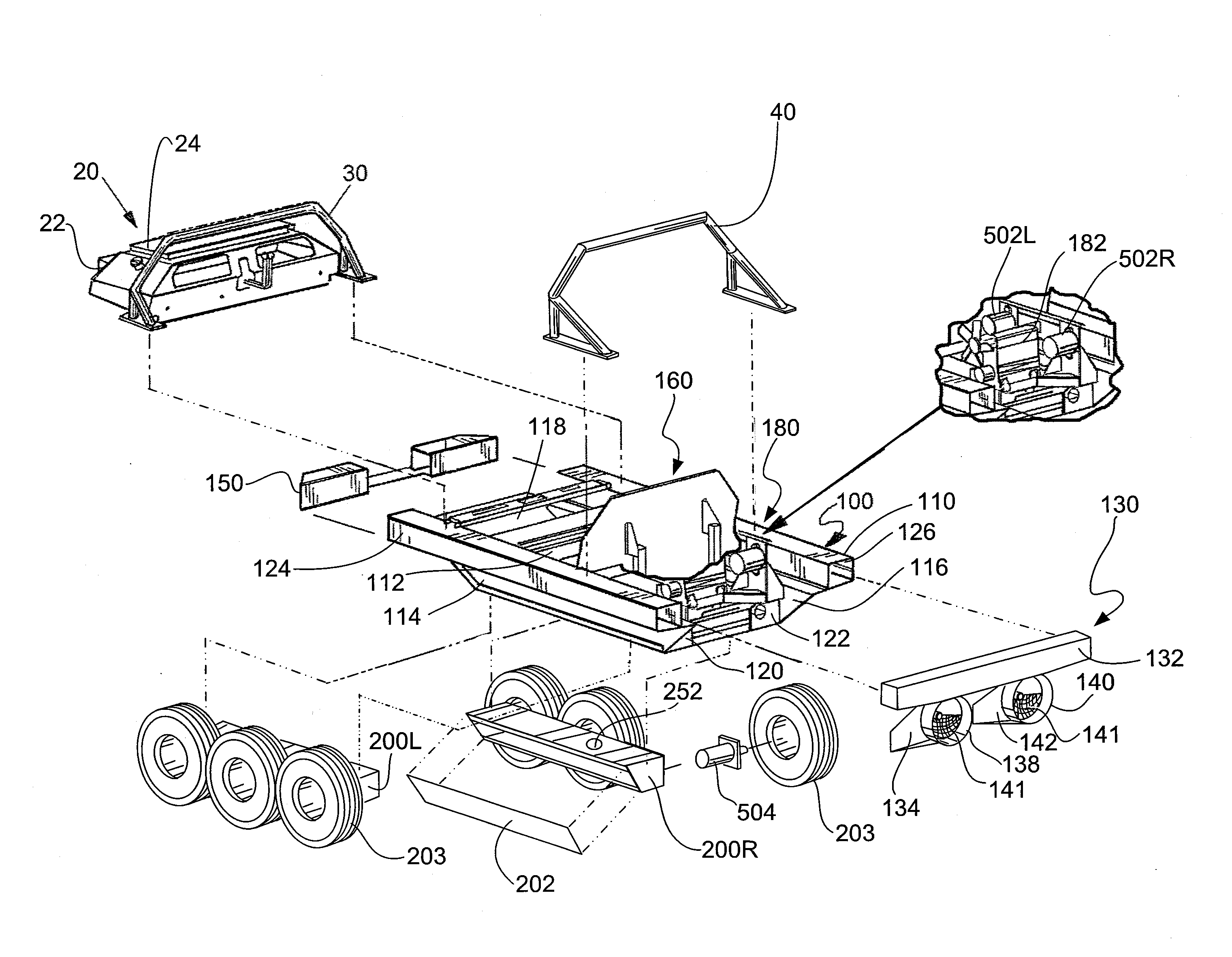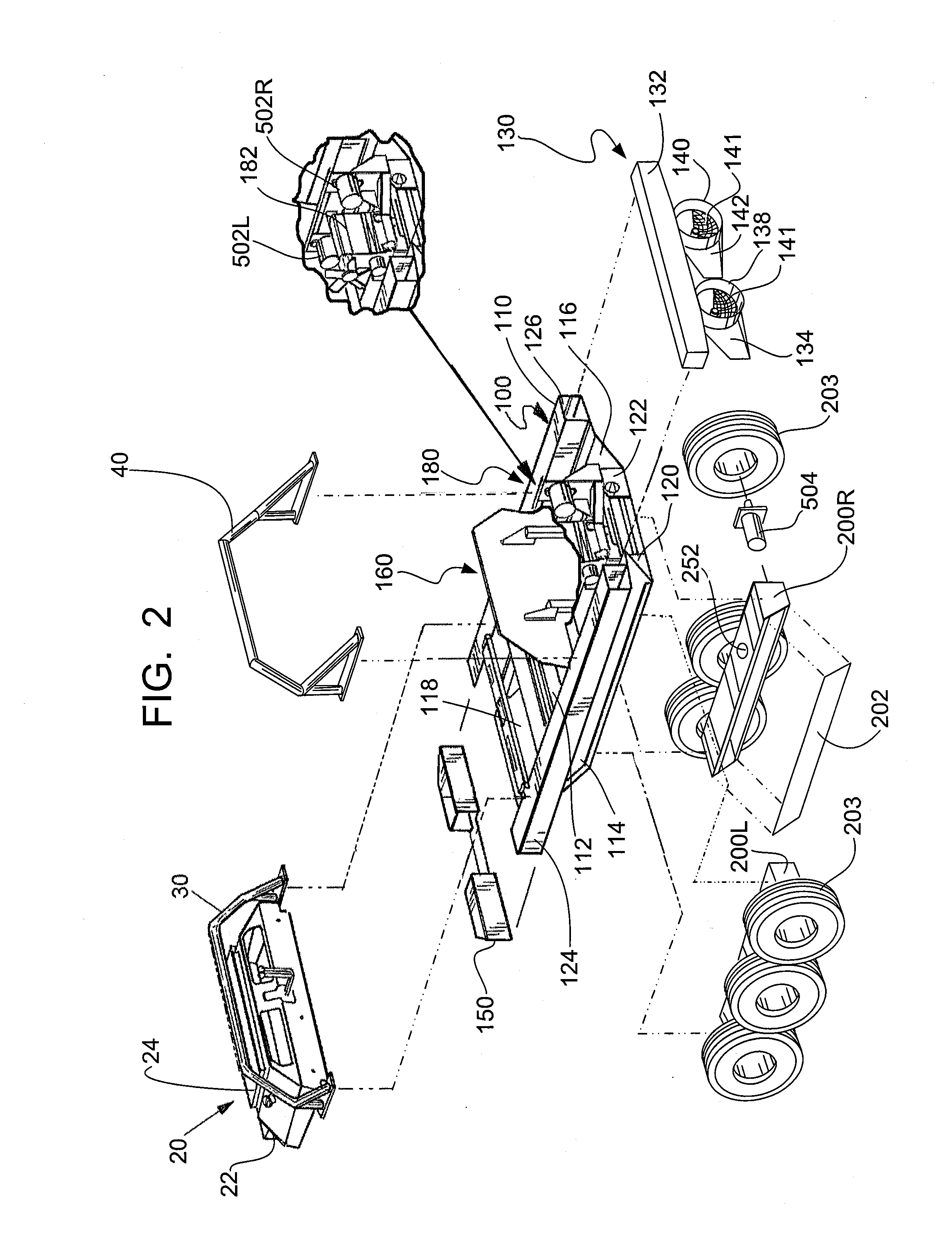Amphibious all-terrain vehicle
a technology of amphibious motor vehicles and all-terrain vehicles, which is applied in the direction of motor-driven power plants, marine propulsion, vessel construction, etc., can solve the problems of a single operator's inability to effectively drive the vehicle out of water, the seal around the mechanism or the mechanism tends to fail, and the problem of a variety of problems that plague known devices
- Summary
- Abstract
- Description
- Claims
- Application Information
AI Technical Summary
Benefits of technology
Problems solved by technology
Method used
Image
Examples
Embodiment Construction
)
[0041]FIG. 1 illustrates an embodiment of the amphibious all-terrain vehicle 10 according to the present invention. Referring now to FIG. 2, vehicle 10 includes body assembly 100, left undercarriage assembly 2001, right undercarriage assembly 200r, front hood assembly 20, grab bar 30, roll bar 40, and rear hood 60 (shown in FIG. 1).
Body Assembly
[0042]Still referring to FIG. 2, body assembly 100 includes body 110, rear bumper assembly 130, front bumper 150, passenger compartment 160, and mechanical compartment 180. Body 110 includes floor 112, left sidewall 114, right sidewall 116, frontwall 118,left propeller motor mounting flange 120, and right propeller motor mounting flange 122.
[0043]Left propeller motor mounting flange 120 extends upward from the left side of the end of floor 112. The left edge of left propeller mounting flange 120 is permanently attached to the inside surface of left side wall 116, preferably by welding. Right propeller motor mounting flange 122 extends upward...
PUM
 Login to View More
Login to View More Abstract
Description
Claims
Application Information
 Login to View More
Login to View More - R&D
- Intellectual Property
- Life Sciences
- Materials
- Tech Scout
- Unparalleled Data Quality
- Higher Quality Content
- 60% Fewer Hallucinations
Browse by: Latest US Patents, China's latest patents, Technical Efficacy Thesaurus, Application Domain, Technology Topic, Popular Technical Reports.
© 2025 PatSnap. All rights reserved.Legal|Privacy policy|Modern Slavery Act Transparency Statement|Sitemap|About US| Contact US: help@patsnap.com



